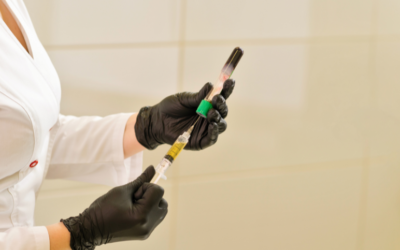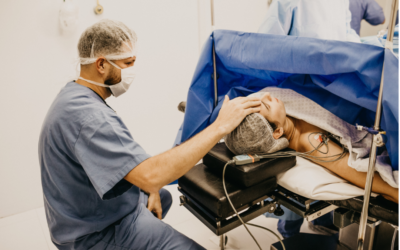News
As part of our commitment to providing a holistic approach to orthopaedic care, we’ve brought together the latest advice, tips and news from Dr Damian Smith, to help you stay in motion.
Platelet Rich Plasma Injections
The rise of regenerative medicine has brought numerous innovative treatments to the forefront, with Platelet-Rich Plasma (PRP) injections leading the charge. PRP therapy, which involves injecting a concentration of a patient’s own platelets to accelerate the healing of injured tendons, ligaments, muscles, and joints, is gaining popularity in both clinical and sports medicine.
What is PRP?
Platelet-Rich Plasma is derived from the patient’s blood, which is processed to increase the concentration of platelets. These platelets, a type of blood cell, play a crucial role in healing by releasing growth factors that stimulate tissue repair and regeneration. Once injected into the targeted area, PRP promotes the body’s natural healing process, making it a potent alternative or complement to surgery and other more invasive treatments.
The Growing Body of Evidence
A growing number of studies support the efficacy of PRP injections. Research indicates that PRP can significantly reduce pain and improve function in patients suffering from chronic tendon injuries, osteoarthritis, and even certain types of acute injuries.
One notable study published in The American Journal of Sports Medicine found that PRP injections provided significant pain relief and improved function in patients with knee osteoarthritis. The study revealed that patients who received PRP reported a 30% to 50% improvement in pain and functionality, with effects lasting up to a year.
PRP in Sports Medicine
Athletes, from weekend warriors to professionals, have increasingly turned to PRP to accelerate recovery from injuries. PRP has been successfully used to treat conditions such as tennis elbow, Achilles tendinopathy, and rotator cuff tears. The non-invasive nature of PRP, combined with its ability to speed up recovery times, has made it a preferred option for athletes seeking to return to their sport quickly.
Is PRP Right for Everyone?
While the potential benefits of PRP are promising, it’s important to note that this treatment may not be suitable for everyone. Factors such as the severity of the condition, patient age, and overall health can influence the effectiveness of PRP. Additionally, some studies have reported mixed results, and the therapy may not provide the desired outcomes in every case.
A Need for More Data
Despite the encouraging results, experts agree that more research is needed to fully understand the long-term effects and optimal applications of PRP therapy. The existing data is promising but not yet definitive, with ongoing studies exploring its use in various fields including spinal disc degeneration, hair loss, and even cosmetic procedures.
Advantages of PRP
Non-Invasive: Unlike surgical options, PRP is minimally invasive, reducing the risk of complications and recovery time.
Autologous Therapy: Because PRP uses the patient’s own blood, there’s a minimal risk of allergic reactions or transmission of diseases.
Pain Reduction and Function Improvement: PRP has shown promise in reducing pain and enhancing the function of joints, particularly in cases of osteoarthritis.
Versatility: PRP can be used in various medical fields, including orthopaedics, dermatology, and dental surgery.
Ongoing Research and Future Prospects
As research continues, PRP therapy is poised to become an even more integral part of regenerative medicine. However, patients should consult with their healthcare providers to determine whether PRP is an appropriate treatment option for their specific condition, given the current state of the evidence.
Unravelling the Mystery of ACL Injuries: Expert Insights from Dr. Damian Smith
As a former athlete myself, I understand the physical challenges and risks associated with competitive sports. One injury that I often encounter in my practice, and I'm passionate about is the anterior cruciate ligament (ACL) injury. ACL injuries...
Surgery post Covid-19 infection and vaccination: current recommendations
Unfortunately, Covid-19 is part of our daily lives and we continue to learn to live with it. Recently the Australian and New Zealand College of Anaesthetists published the “Living guidance: Surgical patient safety in relation to COVID-19 infection...
Robotic Joint Replacement
Joint replacement surgery is a procedure with excellent success rates. A joint replacement can change the lives of patients previously crippled with pain and poor mobility as a result of arthritis. The surgeon cuts and prepares the bone and then...
Paediatric ACL Injuries: Are We Seeing An Increase?
2020 has certainly been an unusual year. It started with devastating fires followed by a global pandemic. After a period of lockdown, home schooling and cancelled sports, in much of Australia we have seen a gradual lifting of restrictions. I have...
Current Strategies in Anaesthesia for Total Joint Replacement
Total joint replacement is a very successful operation for the management of advanced osteoarthritis. It is recognised however as a painful procedure and despite this it requires early rehabilitation and mobilisation to maximise the outcomes. Over...
Diet and Arthritis
There has been a lot of discussion about the role of diet in the management of arthritis. There have also been some myths about the possibility of certain foods causing arthritis. My approach to helping patients manage their arthritis is to offer...
Surgical Robots the Cutting Edge of Knee Replacements
If you’ve been told you might need a hip or knee replacement, it’s more than likely you’ve researched the recommended surgical procedure, and this may have included information about the option of robotic surgery. Technology has evolved into...
Things You Need To Know About Seeing An Orthopaedic Surgeon
How were you injured? How you were injured can be very important in diagnosing exactly what is wrong. The mechanism of injury, the velocity of injury or impact has a big bearing on what structures might be injured and therefore management and...
Knee Arthroscopy: Reasons, Procedure & Benefits
An arthroscope is a thin fibre optic device that can be passed into joints to evaluate and allow the treatment of a number of conditions. A camera is attached to the arthroscope and the inside of the joint can then be visualised on a video monitor....









